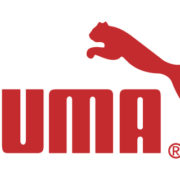What your SME can learn from social media
Last month, we introduced the first instalment of our three part blog, ‘What SMEs can learn from big businesses’. Part 1 highlighted ‘Guerrilla marketing’ and how larger organisations are adopting innovative campaigns in order to raise brand awareness and create that vital social buzz. This month, part 2 focuses on social media and how more and more companies are including the likes of Facebook and Twitter into their marketing mix to help grow their business and attract potential customers.
Out of the total 7 billion people living on the planet, 1.5 billion use social media. From Twitter and Facebook to Google+ and Pinterest, social media has now become ingrained into our contemporary lifestyles, making it easier to engage and share content with individuals online, no matter what the social and geographical boundaries. But social media is no longer just influencing our personal lives; one in three businesses now use social media, with 58% of consumers ‘liking’ at least one brand on Facebook.
Companies are now harnessing the power of social media to build their brands within the landscape of status updates, pins and tweets. To create successful social media campaigns, an investment of time is essential. However, this alone is not enough. A note of caution – it is easy to rush into tweeting and posting pictures, without really understanding why you are doing it and what you hope to achieve. Like any marketing activity, researching, planning and implementing strategies are critical to turning a great idea into great results.
Here are some good and bad examples how some well known companies have used social media to engage with their audience.
1. In October 2012, Cisco, the multinational networking equipment giant, wanted to make sure that they were listening to their customers and responding to questions and queries in ways that were relevant and accurate. With this in mind, Cisco launched their Social Media Listening Centre. On a daily basis, the centre monitors around 5,000 social mentions across 70 company-related platforms, from Facebook pages, Twitter accounts, LinkedIn and YouTube, to company blogs and forums. According to a recent independent evaluation of these listening activities, Cisco achieved a 281% return on their investment over a 5-month period, amounting to an annual cost benefit of over just over £991 million. This was calculated by comparing what Cisco spent on implementing and training staff to use social marketing tool with the benefits received, the avoidance of marketing and customer service costs to achieve the same results, along with indirect benefits, such as increased staff productivity. The results indicated that the new centre helped Cisco employees deal with more enquiries at a faster rate.
2. To celebrate their 100th anniversary, Oreo posted 100 adverts on their Facebook page over 100 days. During the campaign, Oreo’s Facebook friends went up from 26million to 27million and its Facebook interactions increased by 195%. The posts included relevant topics, quotes about Oreos, humorous cartoons and even Oreo themed recipes. The time invested in developing their Facebook campaign paid off as Oreo won the top Studio Award prize from Facebook.
3. However, interacting closely with consumers online can backfire if you have not planned your campaign successfully. Earlier this year, Tesco posted on their Facebook page “Click LIKE if you love getting your groceries delivered.” Alongside people liking the post, there were numerous comments from customers explaining their bad experiences with Tesco’s home delivery service. Tesco did not ignore or delete the comments, instead they responded to every single user, asking for details so they could look into each case and try and solve the problem.
4. Unfortunately, Waitrose’s attempt at #hashtags wasn’t exactly what they had planned either. In 2012, Waitrose invited customers to complete the sentence ‘I shop at Waitrose because… #WaitroseReasons’. What Waitrose thought was a great way to showcase the affordability of the brand backfired, with Twitter users mocking the brands position within the market and their target audience. For example, ‘I shop at Waitrose because it makes me feel important and I absolutely detest being around poor people #WaitroseReasons. ‘I shop at Waitrose because I was once in the Holloway Rd branch and heard a dad say ‘Put the papaya down, Orlando!’
For a company embarking on using social media as part of their marketing, the seemingly endless choice and possibilities can see daunting. However, adopting the right platforms to represent your brand is important. Twitter and Facebook are good for creating conversations with customers and responding to queries, complaints or praise. For the brands that are more visual, sites like Pinterest and Instagram provide an array of creative opportunities. The key to successful social media isn’t just about how many fans, followers or mentions you have, instead the secret to building your brand is the interaction between your business and your online community. For your campaigns to run smoothly, creating a social media strategy is essential. It will help your brand stay in the right direction, generate a return on investment, as well as increase your visibility online.













Leave a Reply
Want to join the discussion?Feel free to contribute!